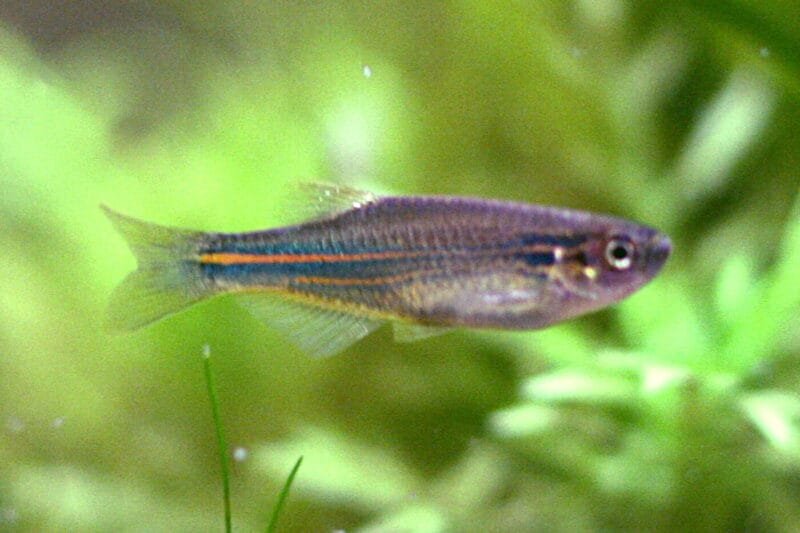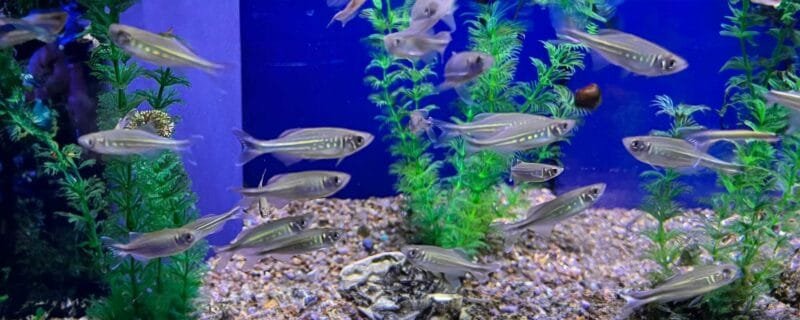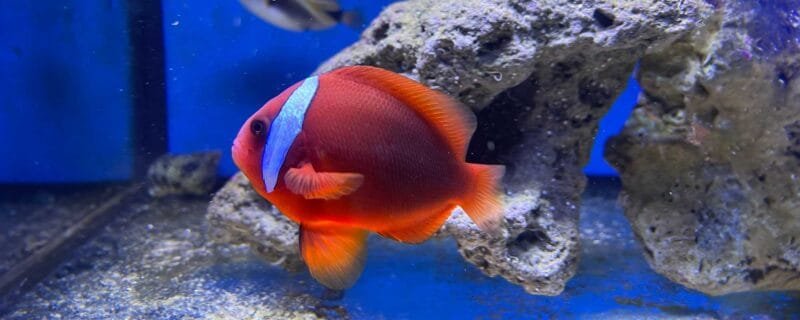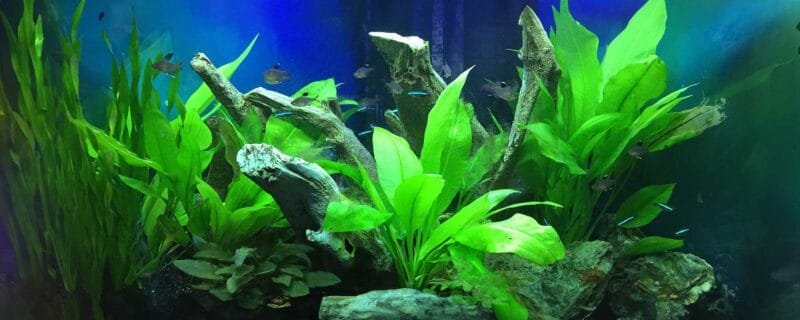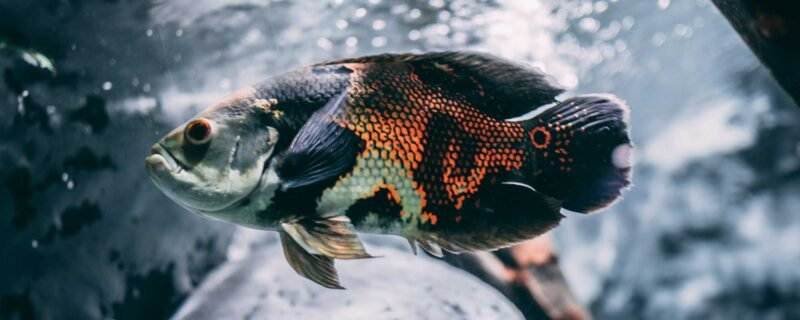The Leopard Danio is a lively, beautifully spotted variant of the well-known Zebra Danio (Danio rerio), bringing endless energy and elegance to freshwater aquariums. Its gold or silver body is flecked with dark spots rather than stripes, giving it the “leopard” nickname and adding visual interest to community tanks.
Let’s explore this charming species—its origins, care, compatibility, and the interesting albino form available to aquarists.
Common Name and Latin Name
Common Name: Leopard Danio
Latin Name: Danio rerio var. frankei
This fish is a variant of the Zebra Danio (Danio rerio) and shares the same genus and care characteristics. Though often considered a distinct variety, the Leopard Danio is technically a spotted morph, believed to have originated through selective breeding rather than as a naturally occurring form.
Native Habitat
While the original Danio rerio hails from South Asia—specifically India, Bangladesh, Nepal, and surrounding areas—the Leopard Danio variant was first identified in the aquarium trade. However, like its striped cousin, it is well-adapted to slow-moving streams, rice paddies, and floodplains with warm, oxygen-rich waters and dense vegetation.
These natural habitats are soft to moderately hard in terms of water parameters and usually have a neutral to slightly alkaline pH.
Size and Lifespan
Leopard Danios are small and sleek, typically reaching about 1.5 to 2.5 inches (4–6 cm) in length. With proper care, they can live up to 3–5 years, though some aquarists have reported lifespans of up to 6 years in optimal conditions.
Diet
Danios are omnivorous and not picky eaters. In the wild, they consume small insects, crustaceans, worms, and algae.
In captivity, they thrive on a varied diet, including:
-
High-quality flake or micro-pellets
-
Frozen or live foods like brine shrimp, daphnia, or bloodworms
-
Blanched vegetables or algae-based supplements
Feeding should be done 1–2 times daily in small portions they can consume within a few minutes.
Sexing
Sexing Leopard Danios can be tricky, especially when young. However, there are subtle differences:
-
Males: Slimmer bodies, often more vibrant in color
-
Females: Rounder bellies, especially when gravid (carrying eggs)
During breeding season, females become noticeably plumper, and males may display more vibrant spotting and increased activity.
Breeding
Leopard Danios are prolific breeders and make a great entry-level breeding project.
Breeding Conditions:
-
Tank Setup: Use a shallow tank (10–15 gallons), with a mesh or marbles at the bottom to protect eggs from being eaten.
-
Water Temp: 78–80°F (25–27°C)
-
pH: Neutral to slightly alkaline (6.8–7.5)
Introduce a small group of 2 males to 1 female at dusk. Spawning usually occurs at dawn. Eggs are scattered and hatch within 36–48 hours. Fry should be fed infusoria or liquid fry food initially, then gradually transitioned to baby brine shrimp.
Is It Good for a Community Tank?
Absolutely. Leopard Danios are:
-
Peaceful
-
Social
-
Fast swimmers
They do best in groups of at least 5–6, which reduces fin-nipping behavior and brings out their best colors and activity.
They pair well with:
Avoid housing them with slow-moving long-finned species (e.g., bettas or fancy guppies), as Leopard Danios may outpace or occasionally nip at them.
Water Conditions
These fish are hardy and adaptable, making them excellent for beginners.
Ideal Conditions:
-
Temperature: 72–78°F (22–26°C)
-
pH: 6.5–7.5
-
Hardness: 5–12 dGH
-
Tank Size: Minimum 10 gallons, though 20 gallons is ideal for active schools
-
Filtration: Moderate to strong flow to mimic natural streams
Ease of Care
Beginner-Friendly: Leopard Danios are extremely resilient and adaptable to varying water parameters. They’re forgiving of beginner mistakes, making them ideal for new aquarists.
Key care tips:
-
Maintain a school of 6 or more
-
Provide plenty of swimming space
-
Keep a tight lid—these danios are excellent jumpers
Compatible Tank Mates
Leopard Danios do well with other peaceful fish, especially those that are active and not easily stressed.
Great Tank Mates:
-
Harlequin Rasboras
-
Cherry Barbs
-
White Cloud Mountain Minnows
-
Otocinclus Catfish
-
Snails and shrimp (though fry may prey on baby shrimp)
Avoid:
-
Aggressive species like cichlids or large barbs
-
Slow or long-finned species like fancy goldfish
Species Variations
While the Leopard Danio itself is a variation, several related types exist:
-
Zebra Danio (Danio rerio) – the striped original form
-
Longfin Danio – with flowing fins, available in both zebra and leopard patterns
-
Golden Danio – a gold-bodied morph with faint or no markings
Albino Leopard Danio
The Albino Leopard Danio features a pale, creamy body with orange or pinkish spots, red eyes, and a translucent appearance. Though not a true albino by genetic standards, it’s often called so in the trade.
It behaves and breeds similarly to the standard Leopard Danio and is equally hardy, though it may be slightly more sensitive to bright lighting due to lack of pigmentation.
FAQs
What is the difference between a Zebra Danio and a Leopard Danio?
Zebra Danios have horizontal stripes, while Leopard Danios have a spotted pattern. Both are varieties of the same species, Danio rerio, and have identical care needs.
Can Leopard Danios live alone?
No, they are schooling fish and need to be kept in groups of at least 5–6 to feel secure and display natural behaviors. A solitary danio will become stressed and may nip other fish.
Do Leopard Danios need a heater?
In most tropical setups, yes. They prefer stable temperatures between 72–78°F (22–26°C). A heater ensures they remain healthy and active, especially in colder climates.
Leopard Danios are an energetic, attractive addition to any peaceful community aquarium. With their spotted beauty, active nature, and low maintenance needs, they offer beginner and advanced aquarists alike the chance to enjoy a vibrant and lively aquatic environment. From standard to albino, the Leopard Danio remains a timeless favorite in freshwater tanks.

